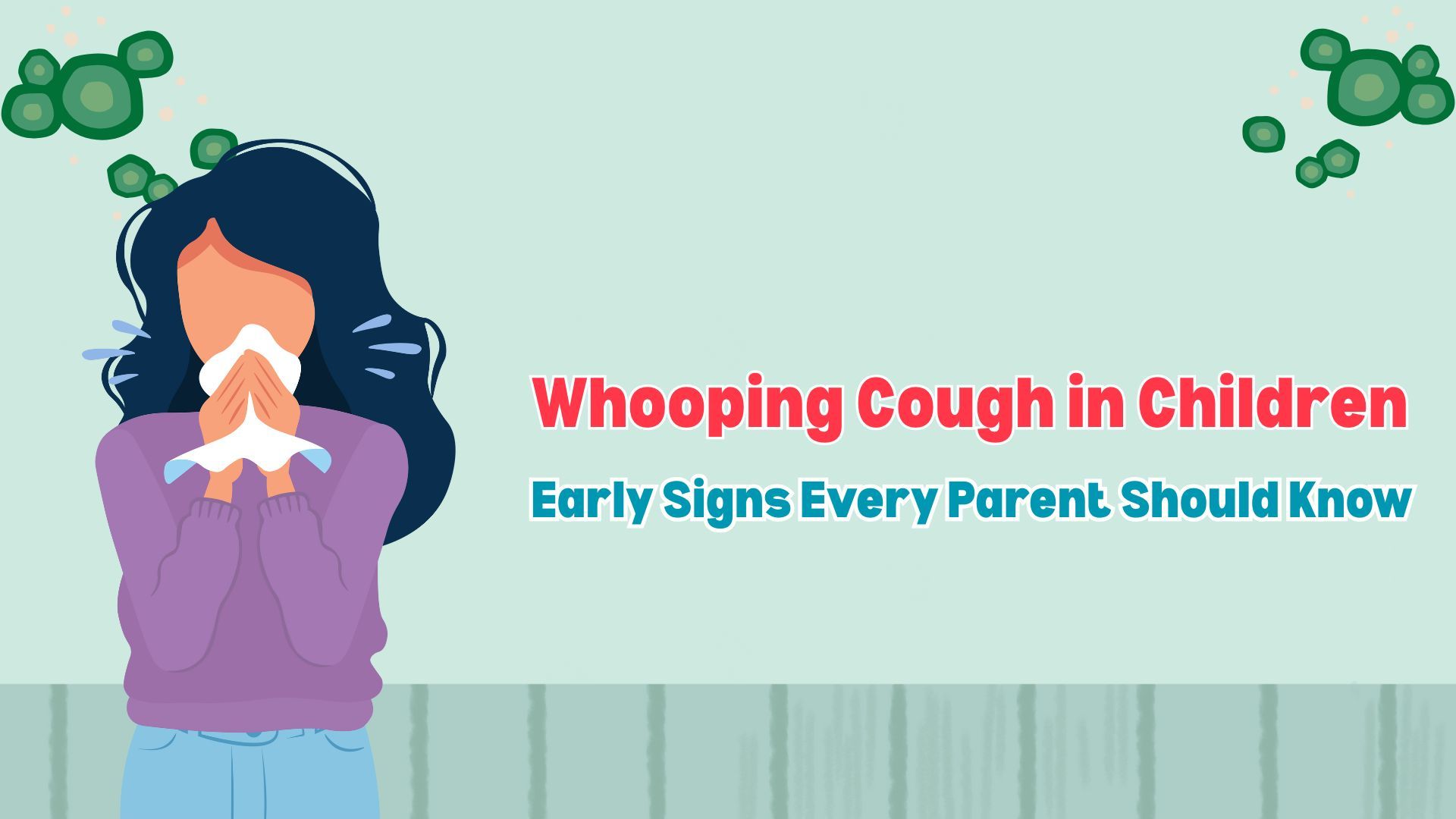Whooping cough, also known as pertussis, is a highly contagious bacterial infection that affects the lungs and airways. While it can affect people of all ages, babies and young children are especially vulnerable to severe symptoms and complications.
Early detection is crucial — especially since whooping cough often starts like a mild cold. In this blog, we’ll walk you through the early signs, when to seek medical help, and how telehealth and online prescriptions can help you act fast when your child needs care.
What Is Whooping Cough?
Whooping cough is caused by the bacterium Bordetella pertussis. It spreads through droplets from coughing or sneezing and can lead to violent coughing fits that make it hard to breathe. In babies under 12 months, it can cause serious health complications, hospitalisation, or even be life-threatening.
Early Signs of Whooping Cough in Children
Whooping cough has three stages, but the first stage can easily be mistaken for a common cold. Here's what to watch for:
1. Runny Nose and Mild Cough (First 1–2 Weeks)
- Sneezing
- Low-grade fever
- Occasional cough
- Red, watery eyes
- Mild tiredness
At this stage, your child may seem just a little unwell — which is why it’s often overlooked.
2. Severe Coughing Fits (After 2 Weeks)
This is when classic “whooping” symptoms start to appear:
- Coughing fits that are hard to stop
- A high-pitched “whoop” sound when inhaling after a cough
- Vomiting after coughing
- Exhaustion from frequent coughing
- Difficulty breathing or turning red/purple during coughing spells
In infants, the cough may be absent, and instead they may stop breathing or have trouble feeding — which requires immediate medical care.
When to See a Doctor
You should contact a doctor immediately if your child:
- Has long, intense coughing fits
- Struggles to breathe
- Makes a whooping sound after coughing
- Has bluish lips or fingernails
- Vomits after coughing
- Shows signs of dehydration or fatigue
Can’t get in to see your regular GP? A telehealth appointment can be a fast, effective way to consult with an online doctor or telehealth doctor, especially if you’re unsure whether it’s whooping cough or something else.
When it comes to whooping cough (pertussis), starting treatment early makes a big difference — especially in children. The infection can be contagious long before the “whooping” cough begins, so acting fast not only helps your child but also protects others around them.
🩺 1. Antibiotics: The First Line of Treatment
Doctors usually prescribe a course of antibiotics, such as azithromycin or clarithromycin, to:
- Shorten the duration of the infection (if started early)
- Make symptoms less severe
- Prevent spreading the infection to others (especially in schools or daycares)
👉 Important: Even though antibiotics help stop the bacteria, they don’t instantly stop the cough, especially if the condition has progressed to the second phase. The cough may linger for weeks, even after the infection is under control.
🌐 2. How Telehealth Helps With Fast Access to Treatment
You don’t need to rush to a clinic or wait for an in-person appointment — telehealth makes it easy and safe to get treatment for whooping cough from home. Here’s how:
- ✅ Quick Diagnosis via Web Doctor: A licensed telehealth doctor or online GP can assess your child’s symptoms over a video or phone call.
- ✅ Online Prescriptions or eScripts: If needed, the doctor can issue an online prescription or eScript, which is a digital prescription sent to your phone or email. It can be filled instantly at a pharmacy near you.
- ✅ Instant Consult Options: If symptoms suddenly worsen, some providers offer instant consults, so you can speak to a GP near you without waiting.
🚚 3. Getting Medication Easily
After receiving the prescription online, you can:
- Go to any local pharmacy to get the medication
- Or choose home delivery (if the provider or pharmacy offers this service)
This is especially helpful if you’re looking after a sick child and can’t leave the house.
📄 4. Supporting Documents You Might Need
If your child needs to stay home or you're a parent who needs time off to care for them, you may also need:
- A medical certificate
- A doctor’s certificate online for work or school
- A sick certificate online to confirm the diagnosis
All of these can be requested as part of your telehealth appointment — saving you the hassle of physically visiting a clinic.
Need a Medical Certificate?
If your child is diagnosed with whooping cough, they may need to stay home from school or daycare for at least five days after starting antibiotics — or longer if untreated.
Need to inform your workplace or school? You can request a:
- Medical certificate
- Doctor’s certificate online
- Sick certificate online
With online doctors certificate services, it’s fast and easy to get documentation without visiting a clinic in person.
The Role of Telehealth in Managing Whooping Cough
Thanks to modern telehealth services, you no longer have to wait in crowded clinics with a sick child. With a few clicks, you can:
- Book an appointment with a GP near me
- Speak to an online doctor from your home
- Get a dr certificate or medical certificate online
- Receive an eScript instantly for pickup or delivery
Whether you need advice, diagnosis, or follow-up care, telehealth appointments are a safe and convenient solution for busy parents.
Final Thoughts
Whooping cough can escalate quickly, especially in young children. Recognising the early signs and acting fast can help your child recover sooner and reduce the risk to others. With online prescriptions, fast telehealth GP access, and doctors near you available digitally, you can manage care without delay.
